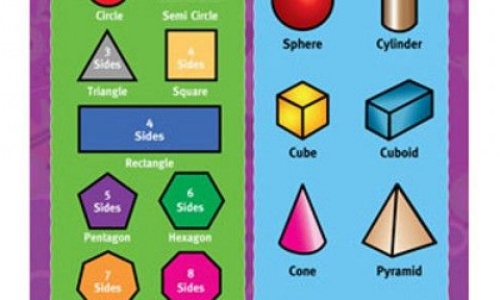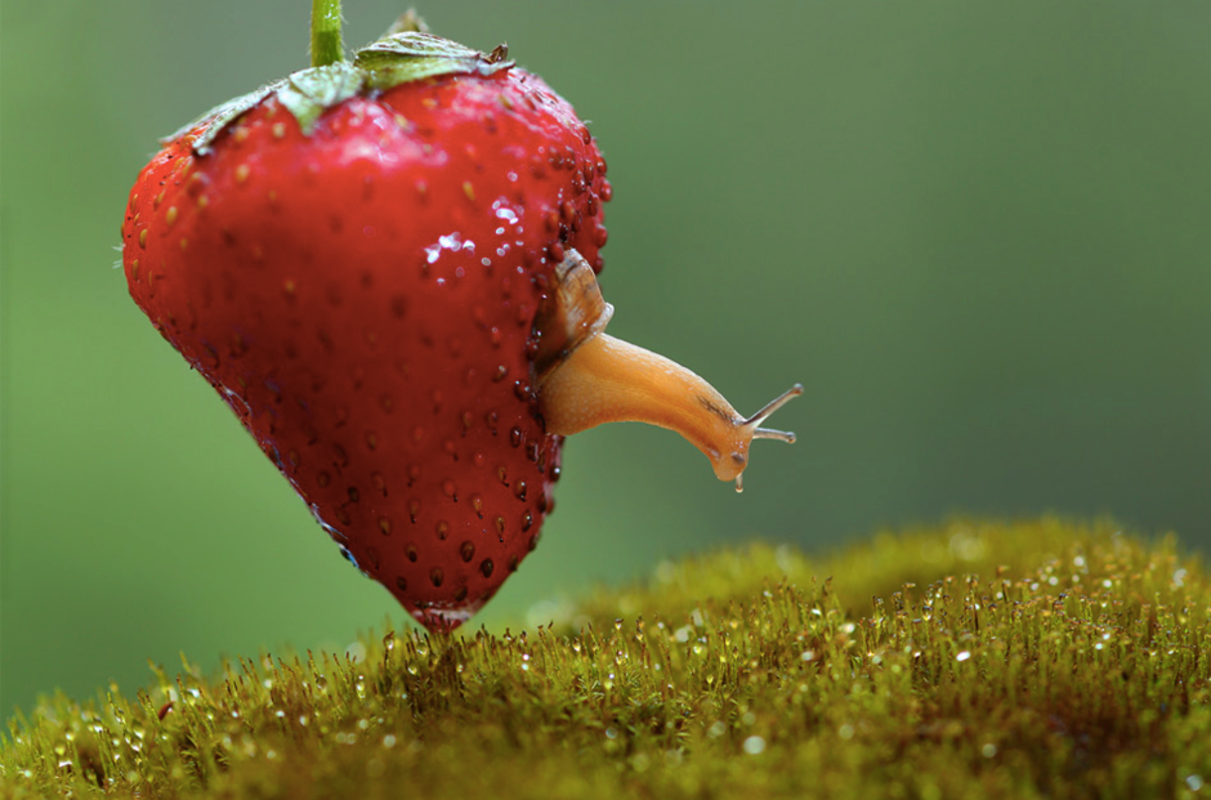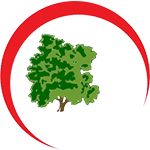Year 1 & 2 Week 5 29th June

Big Talk
Have a look at the picture and then talk about the questions below.

Do you think that although snails move very slowly, things around them seem to happen very quickly?
Would you like to be a snail? What would be the positives and negatives?
What do you think is holding the strawberry in that position?
Where do you think the snail will go next?
How do you think snails communicate?
Have you ever heard the expression for someone to ‘be going into their shell’? What do you think it means?
Imagine you can see the pattern on the snail’s shell. Can you draw or describe what you have imagined?
These sentences are ‘sick’ and need help to get better. Can you help to make then more interesting by using adjectives and adverbs? For example – She slowly stretched her slimy neck out of the juicy, bright red strawberry.
She stretched her neck out of the strawberry. Her skin was covered in strawberry juice. She looked at the ground below.
Phonics
Year 1
Have a go at playing https://www.phonicsbloom.com/uk/game/odd-and-bob?phase=4
Read the words and then decide if they are real or fake words.
Can you read these compound words? Compound words are formed when two or more words are joined together to create a new word that has an entirely new meaning. For example, “sun” and “flower” are two different words, but when fused together, they form another word, Sunflower.
What are compound words? https://www.bbc.co.uk/bitesize/topics/zcgv39q/articles/z38t6fr
Year 2
This week we would like you to think about past and present tense.

Can you sort these sentences into past and present?
Can you copy out this table and fill in the missing words?
Can you change these sentences so that they are written in the past tense?
Can you change these sentences so that they are written in the present tense?
Maths – Shape
This week is all about shape. There are some great short videos to watch on the BBC https://www.bbc.co.uk/bitesize/topics/zjv39j6.
Year 1
Your child will learn the difference between 2D and 3D shapes:
-
2D shapes are flat shapes with two dimensions, length and width. They cannot be picked up.
- 3D shapes are solid shapes with three dimensions: length, width, and height. They can be picked up.
Children should be able to recognise circles, triangles, rectangles, and other 2D shapes. They will know that a square is a special rectangle because all its sides and angles are equal.
Your child will also learn to recognise spheres, pyramids, cones, cuboids, and other 3D shapes. They will know that a cube is a special cuboid because it has equal edges and square faces.
There are lots of everyday ways you can help your child to understand geometry. Here are just a few ideas.
1. Point out shapes around us
Point out and ask your child to name common 2D and 3D shapes. For instance, can they name any 2D shapes in the patterns on your curtains, or in the pictures in their books?
Your child should know that 2D shapes are completely flat. Many children may incorrectly say that items like coins are 2D shapes – be sure to explain that a coin is a 3D shape (a cylinder) because it has height and is a solid.
Ask your child to relate everyday objects to 3D shapes: a ball is a sphere, a cereal box is a cuboid, a can is a cylinder, and so on. Encourage them to see shapes in different orientations and sizes.
2. Use the language of shapes
Try to use the specific mathematical language when talking about shapes. For example, there is no 2D shape called a diamond. The shape your child might think is a diamond is either a square, a rhombus, or a kite.
Try giving your child a 3D shape (for example, a cereal box) to touch and explore. Encourage them to use specific language such as straight, curved, edges, faces, and corners/vertices to describe it. For example:
The cereal box is a cuboid. It has six faces and eight corners. All of its edges are straight.
You could also try showing your child a cylinder and a cube and asking them to describe their similarities and differences. For example, while they are both 3D shapes, cylinders have two circular faces and a curved surface whereas cubes have six square faces.
3. Play ‘guess the shape’ games
You could play a game with 3D shapes and a bag that your child cannot see through:
- Hide a shape in the bag and ask your child to feel the shape.
- Ask your child to describe the shape as best they can and try to work out what it is.
- Once your child has told you what shape they think it is, take it out to see if they were correct.
This will help children to begin visualising the shapes, which is an important skill they need to develop. If you’re out and about, you can play a different version of this game. Think of a shape and prompt your child to ask you questions in order to guess the shape. You can only answer ‘yes’ or ‘no’.
4. Play some games online such as https://www.topmarks.co.uk/ordering-and-sequencing/shape-patterns
5. We have also attached the White Rose Maths worksheets to complete if you want to.
Year 2
Here is a useful video to watch… https://youtu.be/3CkxzWpeG7w
Here are some ideas you could use at home…
1. Explore shapes around us
Find everyday opportunities to talk to your child about common 2D shapes like rectangles, triangles, and pentagons. Try to use the language of polygons and non-polygons:
- A polygon is a 2D shape that has three or more straight sides and angles (for example, a rectangle).
- A non-polygon is a 2D shape with sides that are not all straight (for example, a semicircle).
When talking about 2D shapes, encourage your child to use language like straight, curved, side, and corner (or vertex/vertices) to describe them. This will help them to understand the properties of 2D shapes and to know how they differ from 3D shapes.
Your child should know that 2D shapes are completely flat shapes. See how many different 2D shapes your child can spot in everyday life, such as on buildings, cushions, clothes, curtains, or in picture books!
2. Talk about 3D shapes
Talk to your child about common 3D shapes such as cuboids and prisms (a prism is a 3D shape that has two identical parallel bases, such as a cylinder).
Point out 3D shapes in different orientations and sizes when out and about with your child. See if they can describe the shapes to you using precise language like face, vertex (vertices), and edge.
Seeing lots of real-world examples will help your child realise that shapes like cuboids and pyramids are not always similar to each other. For instance, they could identify pyramids with different bases, such as triangular or square-based pyramids.
3. Guess the shape game
- Encourage your child to ask you a series of questions to work out what shape you are thinking about.
- See how many questions they need before they guess correctly.
Alternatively, you could draw a shape without your child seeing. Describe the shape to your child and see if your child can draw it from your description. Compare the shapes to see how close they are.
You could also try challenging your child to find certain shapes – a 3D shape with a square base, a 2D shape that has three sides, and so on. This helps them understand exactly what all these maths words mean.
4. Compare, order, and sort shapes
Your child needs to be able to compare shapes using the correct mathematical language.
Show your child two shapes, 2D or 3D (for example, building blocks, cereal boxes, cans). Can your child name the shapes? Ask them to describe to you what is the same about them and what is different. For example:
You may choose a cube and a cuboid. Your child may tell you the shapes are similar in that they are both 3D shapes with 8 vertices, 12 edges and 6 faces. They are different in that a cube has 6 square faces whereas the cuboid may have 6 rectangular faces (which could be a mixture of squares and rectangles).
To practise sorting 2D shapes, your child could put the shapes into groups according to the number of sides, whether they are regular or irregular, and so on. When working with 3D shapes, they could sort the shapes according to the number of edges, vertices, faces, whether they can roll or not, and so on.
You could ask your child to sort their shapes in any way they like and decide on the headings for the groups. This helps them to figure out properties of shapes independently.
5. Play games online such as https://www.topmarks.co.uk/shapes/carroll-diagrams-2d-shapes
6. Complete some of the White Rose Maths resources at the bottom of the blog
7. Complete the challenges posted at the bottom of the blog
8. Create some 3D shapes using the nets below to help learn the different properties of 3D shapes
English – All About Me & Handwriting
This week for English we would like the children to write fact files about themselves. We would like to focus on –
Writing in full sentences- say it, count it, write it
Capital letters at the start of every sentences
Full stops at the end of every sentences
Using all of the sounds in words (use a sound mat to help)
Using a word mat to help spell unknown words
Forming all letters clearly and correctly
(Y2) Using conjunctions such as because, however, and, although
Please support your children by talking about what they want to write. Let them have a go at writing independently and then discuss what they've written. Encourage them to check - have they used a capital letter? Full stop? Support them on making one or two changes to edit their work. Each day you could add a new page or section to your fact file for example-
- About me (name, age, birthday, shoe size, height etc.)
- Things I like
- Things I don’t like
- My family
- Favourites (food, colour, toys, games)
- When I grow up
- Hobbies & interests
- Friends / People I love
- Things I am good at
Children can draw pictures to go with their writing and make it as beautiful and colourful as they wish.
Topic - Our Bodies
This week for topic we would like you to think about your bodies. How many parts of the body can you name? Can you use stickers or post it notes to label one of you adults? There is a worksheet at the bottom of the blog to use if you wish.
We would also like you to learn about the senses. Below is a powerpoint you can look through and a short video to watch https://www.bbc.co.uk/bitesize/topics/z9yycdm/articles/zxy987h.
You could…
- go outside on a senses scavenger hunt (sheet below)
- write a poem about your senses (I can see…, I can hear…, I can taste…, I can touch…, I can smell…) Use lots of adjectives and verbs to help describe these. (For example- I can taste a sweet, juicy strawberry. I can see a bright, yellow banana)
- take a look at https://www.theschoolrun.com/homework-help/our-senses
- Do a sniff test - collect different items that smell - some edible and some not. Test people to see if they can pick out things that can be eaten and those that can't
- Mystery noises - Can you guess the sound? Close your eyes or turn away from the "sound maker." Make each sound and see if everyone knows what it is. Example sounds:
- Shake pennies or other coins
- Clap hands
- Clap chalkboard erasers
- Tap a pencil or pen on a desk
- Close a book
- Crumple up paper or foil
- Stomp on the floor
- Tear some paper
- Close a stapler
- Bounce a ball
- Blindfold taste challenge – collect some different foods- can the taster guess what they are eating?
- Blind touch test – run your fingers and hands over a range of items and describe how they feel.
Year 2 Science
This week on Developing Experts there is a lesson on Understanding the digestive system. The mission assignment is a very messy experiment to help you learn more about how our digestive system works!
Here are some great facts and quizzes about the digestive system- https://www.theschoolrun.com/homework-help/human-digestive-system
https://www.natgeokids.com/uk/discover/science/general-science/your-digestive-system/
https://www.dkfindout.com/uk/human-body/digestion/
And there are some resources you might find useful at the bottom of the page.
The Science Behind the Science
Here are the major stages of the digestive system:
1. Chewing
Our mouths have three different types of teeth, the incisors, canines and molars. The teeth that we chew at the back of our mouths are molars. They are adapted for chewing because they have a large surface area which we can grind our food down with.
2. Swallowing
The epiglottis is a leaf-shaped piece of cartilage at the back of our throats (just above the voice box). It stops food going into our trachea and lungs and makes sure it goes down our oesophagus to our stomach.
3. Stomach
Our stomachs are filled with hydrochloric acid, which is a strong acid that breaks down our food. The acid in our stomach also forms part of our immune system, as it can destroy some types of bacteria and viruses which we might have ingested.
4. Small Intestine
The small intestine has a very large surface area, not only due to its length but also because it has folds called villi. The noises you sometimes hear from your tummy when you're hungry is actually your small intestine cleaning itself in preparation for food!
5. Large Intestine
The main function of the large intestine is to remove water from our food. For this reason, it can be removed, if need be, without impacting a person's life too much. They will, however, need to drink more fluids to avoid dehydration.
as glucose and provide a high energy source. Fats are made from fatty acids and glycerol and are also a high energy source.
Proteins are made from amino acids and its main uses are growth and repair. If there is an insufficient amount of carbohydrates and fats in the diet, proteins are used as an ‘emergency’ back up source. During adolescence, individuals are growing quickly and require a lot of protein. If you get an insufficient amount of protein in your diet you can develop protein deficiency. This can then lead to a disease called kwashiorkor, which causes a swollen abdomen. This is more common in developing countries.
A balanced diet will also require nutrients that don’t necessarily provide energy. The most important ones are: water, minerals, vitamins and fibre. Water aids with electrolyte imbalance, regulates body temperature, avoids dehydration, helps to lubricate and cushion the joints as well as getting rid of waste products through urination, stool and perspiration.
Minerals such as iron help to make haemoglobin. Calcium is the key for healthy bone and teeth development and plays a role in muscle contraction, and the release of hormones. Vitamins are also vital for the normal functioning of the body. Here are a few examples: Vitamin C prevents scurvy. Vitamin D is important for calcium absorption and bone growth and prevents Vitamin D deficiency and rickets (weak or soft bones in children). Vitamin B is useful in aiding carbohydrate, fat and protein synthesis as well as hormone production.
Fibre is also important. It helps to normalise bowel movements, maintain bowel health, lowers cholesterol levels and helps to control blood sugar levels. It is important to maintain a balanced diet to avoid further health complications. If you eat too much and exercise too little you may become overweight. Overweight people have an increased chance of suffering with diabetes, arthritis, heart disease, cancer, to name a few.









